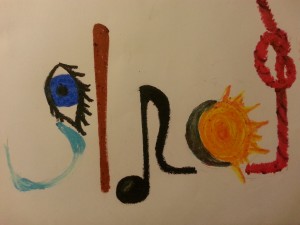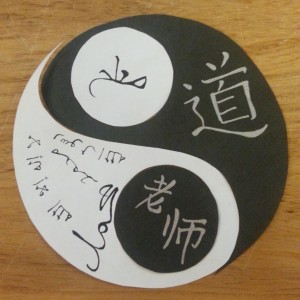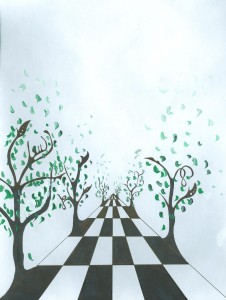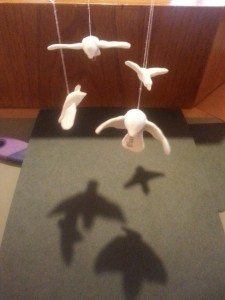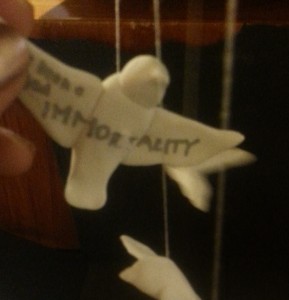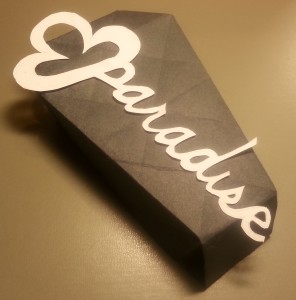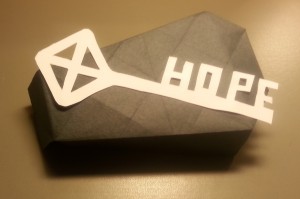a prologue
May 8th, 2014 by lydiachenThis blog contains a series of my first encounters and impressions with specific manifestations of Islam in traditional and modern contexts. My aim in taking A&I 54 was to better understand Islam as a religion, but like all religions, Islam is deeply embedded in local worlds, including culture, politics, and art. Although the overarching and fundamental challenge may be the divide between God and humanity, creative works of art and architecture can serve to connect the spiritual and the physical, the unseen and the seen, motivating the cultural studies approach to Islam that we utilized in the class. Although this approach may not be comprehensive, it provides a starting point for thinking about art in a larger social and religious context, and poses the very relevant question: which Islam?
Divine Versus Human Nature
Humans are, by nature, separate from God. Humans are flawed, forgetful, and finite; God is perfect in his eternal wisdom. These traits create a spiritual as well as temporal divide between God and man. Islam, like many other religions, grapples with bridging this divide. However, the Islamic characterization of this divide is also a fundamental aspect of the religion. With these blog posts and reflections I wanted to argue that although there may not be an easy way to achieve unity with God, it does not have to be difficult to start.
We started the course with the simple observation that the term muslim means simply “one who submits.” In this sense, all of Creation is a muslim. However, humans provide a unique challenge to this statement. “Do you not realize that everything in the heavens and earth prostrates / submits to Allah: the sun, the moon, the stars, the mountains, the trees, and the animals? So do many human beings” (Qur’an 22:18) In fact, I would argue that being able to choose is, in and of itself, the privilege of human beings, the one creation that is able to both remember and forget. This ability means that Islam is not a static or monolithic entity, to be imposed on modernity. Whether it is an illiterate young boy from Tajikistan whose recitation of the Qur’an moves his audience to tears, or the writings of a famed Islamic scholar, each manifestation of Islam bears the mark of those who believe, remember, and live it everyday.
Another view on the personal nature of Islam is presented in the famous Persian poem, The Conference of the Birds. A staple in Islamic literary tradition, the poem uses the metaphor of a quest through space and time to find a mythical ruler. The journey is undertaken by a flock of birds, each with a flaw that represents different aspects of the human condition and the ways in which it can distract us from the ultimate goal of knowing God. Drawing from Sufist ideals, the poem claims that God exists in all of Creation.
Being a Muslim means many things—its definition has changed over time, sparked wars, is constantly evolving even now. This struggle, however, may be closer than many people suspect. In the Hadith, the Prophet Muhammad states that the “major jihad” is the “jihad of the self.” In an individual sense, self-knowledge and realization may be necessary to gain control of the darker parts of human nature. However, on a social and cultural sense, I interpret this teaching of the Prophet in a broader manner. These weekly blog posts are an attempt not only to capture a facet of Islam, but also a glance into one Muslim’s life. Layered on top of that is my own experience and judgments, a glimpse into my own stories. Ultimately, Islam is a faith that exists in the gaps—from God to human, from human to human.
Interior and Exterior
In bridging these gaps, art can play a crucial, if controversial, role. In class we explored many very different conceptions of the nature of Islamic art—what constitutes it, what inspires it, what defines it.
For S.H. Nasr, Islamic Art is characterized by the batin, the “inner aspect” of a work. The ultimate sources of inspiration are divine in nature—the Qur’an, the Hadith, and inspiration that comes directly from God. His claim that “Islamic art is the result of the manifestation of Unity upon the plane of multiplicity” is one that I explore in detail in my post for week six. For Nasr, the audio-visual aspects of music, art, and literature are ways for the human soul to communicate with and understand a world that cannot be seen or heard. In this way, art is a very direct link between the Muslim soul and God, since all Islamic art is divinely inspired.
The opposing viewpoint, from Gulru Necipoglu, focuses on zahir, which refers to the exterior, the surface meaning of objects or works. For Necipoglu, Islamic art can be deconstructed into a series of symbols that are invested with many cultural and political associations that may change over time. This viewpoint is perhaps more easily conceptualized than that of Nasr, since we can easily pick out common motifs such as nature, arabesques, or alcohol in works traditionally considered to be Islamic in nature.
The public and private nature of art is a debate that I continue to struggle with, especially in the context of Islamic and religious creations. I suspect that the answer is some combination of the two—there is no question in my mind that artworks can be deeply moving on a spiritual and personal level, and in this regard may owe their power to what Nasr refers to as Islamic spirituality. At the same time, studying the mosques and artistic creations of this course in their sociopolitical and cultural contexts has been particularly illuminating and I find it hard to believe that secular and religious agendas can be completely separate. However, Necipoglu and Nasr agree that the traditional Western approach to Islamic art has been overtly focused on aesthetics and overlooks the multiplicity of styles, sources, and meanings that can be found in Islamic art.
Whether you believe Nasr or Necipoglu, both or neither, the contrast between zahir and batin is one that pervades Islamic thinking. In the design of mosques, in the composition of poetry, and in the recitation of the Qur’an, the distinction between seen and unseen, heard and unheard is an important one.
Ambiguity and Pluralism in Islam
I came into this class with many questions about Islam that I suspect are echoed by many: how it can espouse tolerance yet be associated with terror, how the Qur’an supports gender equality yet Islamic states mandate women to cover themselves. This confusion has not dissipated. Both lectures and course material alike were filled with exceptions to the rule. Some Muslims condemn music as a distraction and temptation; others see it as a way to connect to God and other believers alike. The Shia-Sunni divide is very nearly as old as Islam itself, even though all Muslims hold the Qur’an and the Prophet to be sacred.
The essay that began to mold all of these conflicting viewpoints into a coherent whole for me was contained in Ravishing Disunities. In it, Agha Shahid Ali argues that the charm of a ghazal comes from what he calls “considered disunity.”
When students ask about a poem such as The Waste Land—How does it hold together?—I suggest a more compelling approach, a tease: How does it not hold together? I underscore How to emphasize a craft. The ghazal has a stringently formal disunity, its thematically independent couplets held (as well as not held) together in a stunning fashion (Ali 2).
This essay was one of the turning points of this semester for me. Ali goes on to describe the Western concern with completeness and linearity, ideas he claims are not expected or in fact even desired in ghazal composition. Ambiguity of intent is also prized in ghazals, and the skilled poet is one who can tell multiple stories at once. These ideas were alien and at times frustrating to me, but if one takes the time as Ali suggests, to consider these “formal disunities,” the result can be enlightening. The linear, monolithic and logical manner of thinking espoused by Western traditions is not a suitable approach for analyzing many aspects of the Islamic experience. Ghazals are merely one example. Another example is the way that Islam has integrated itself into the local cultures of so many different geographic locations, taking on a distinctive flavor in each. In South Asia, for example, Islam has flourished not by a top down takeover, but by fitting itself into the existing religious systems. Muhammad, for example, fits nicely into the Hindu pantheon. Moreover, Muslims recognize the legitimacy of ahl al-kitab, the people of the Book (referring to other religions, such as Judaism and Christianity, that have a sacred scripture). Within Islam, there is plenty of room to maneuver, room I once interpreted as incomplete or imperfect.
Pluralism of experience, as well as ambiguity, is an integral part of Islam, not a challenge to its legitimacy. Things often are not black and white. One work that expertly deals with the blurred lines in a modern context is The Reluctant Fundamentalist. A talented narrator manipulates and presents the story in a way that defies an easy conclusion. Another tale that narrates modern events is Persepolis. Marjane, the young narrator is pulled toward one ideology, then another: by her parents, her teachers, her friends. At the end of it all, I must repose Professor Asani’s first question: how do we know what we know? And moreover, is what we know ever more than just a fraction of the truth?
To end with the theme of ambiguity and pluralism in Islam is, I feel, appropriate. If this course has taught me anything, it is that I have that much more to learn. This whole blog is, in a sense, a prologue. It is part one of my experience with Islam, your preview into my opinions and thoughts, and an open-ended question about the future. For just a few minutes, we’ll let go of our compulsive need for completeness, and appreciate the one tiny, tiny facet of the entire Islamic experience that these six blog posts form.
